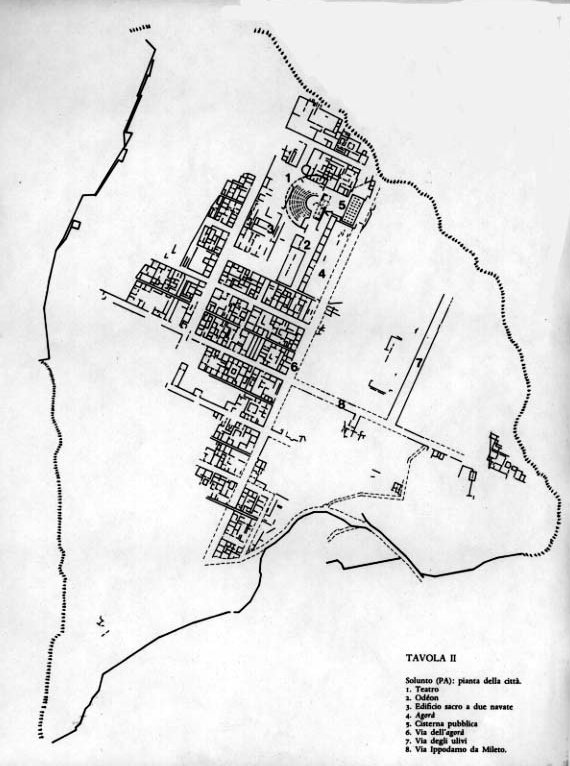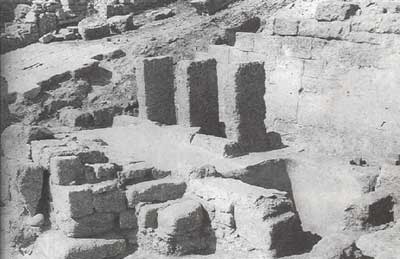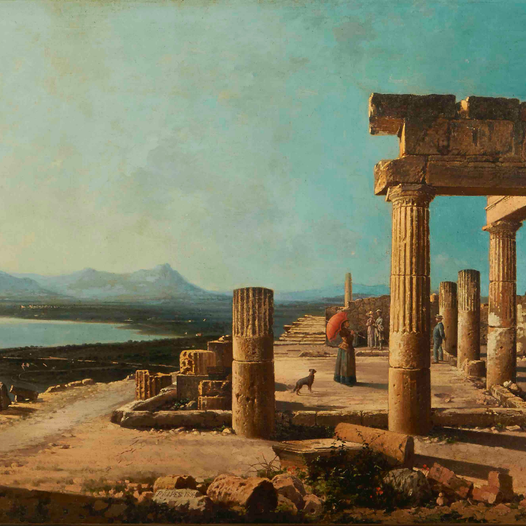
Sicily is steeped in multicultural heritage, and navigating the island's complex history can be challenging. Thanks to historians like Palermo-based Louis Mendola, we have several comprehensive yet approachable books to serve as a road map. A leading medievalist, Louis leads his readers through the island's layered past, challenging stereotypes, unearthing hidden and forgotten histories, and giving voice to descendants.
I recently reached out to Louis after reading The Peoples of Sicily: A Multicultural Legacy, which he co-authored with Jacqueline Alio. The book serves as an essential starting point for exploring the region's roots, highlighting the many conquerors, wayfarers, and rulers who left their mark on its food, architecture, and language. Louis, who grew up in Upstate New York, has called Sicily home for the past 30 years. It's a return to the place of his ancestors and a base for first-hand research. He shared with me how he got his start, surprising discoveries, his favorite historical period, challenges, future projects, and his hopes for his readership.
What led you to specialize in Sicilian history?
Mostly because I'm Sicilian. I've been reading a lot of these things since I was a teenager. So, in my case, I like to say that I didn't look to join the field, but the field kind of sought me. It makes sense that somebody would study a field of history that pertains to their own ancestry instead of, let's say, just choosing someplace else.
What are some of the most surprising discoveries you've made in your research?
It's the holy grail for historians to find original stuff that nobody else has published. In my case, some of the original things I've found have been slightly arcane. For example, I found a reference in the Vatican Library in an uncataloged manuscript to the Assizes of Ariano of 1140. We have two manuscripts of that, two codices that were discovered after 1700: one at Monte Casino, the other at the Vatican. And I actually found a reference to them. It was written about four or five years after that, which was rather interesting. So, it wasn't an earth-shattering discovery, but it reinforced the dating of the documents.
How has Sicilian history shaped the island's identity?
In my books, I make the point that by 1300, we had what I refer to as a monoculture. It was essentially Latin. It's what you see today.
We have to consider that the Jews of Sicily were expelled or converted in 1493, a year after Spain. So from that point onward, we ended up with the monoculture, and you might even refer to it sometimes as an ethnocracy, which is a government or a place based on one ethnic group instead of many.
In some of my recent books, I discussed whether there's a philosophy to the study of Sicilian history. Many of us believe that there is, and part of it is the multicultural element. Sicily had all kinds of different ethnic cultures, and for some periods, you had them all at one time.
During the Norman period, up until about 1200, there were Muslims, Jews, Latin Christians, and Orthodox Greek Christians. So, there were four essential societies.
Which period is your favorite?
I would say the Norman-Swabian period. It was more interesting than a lot of other periods of Sicilian history. It also represented a period when the Kingdom of Sicily was actually independent because in 1266, with the Battle of Benevento, the Hohenstaufen Dynasty of Frederick II was defeated. The capital was transferred under the Angevins to Naples from Palermo. And then a little bit after that, in 1282, with the War of the Vespers, it actually split. So, you ended up with the Kingdom of Naples and the Kingdom of Sicily. That was true sovereignty and with kings in the case of Roger II, then Frederick II, his grandson, and all the others. These were people born in Southern Italy, even though their dynasties had come from elsewhere.
What challenges do you face researching and writing about Sicilian history?
Oddly enough, the greatest challenge is not the research or even the writing, which is very labor-intensive. That's not even it. The real issue is that you end up either debunking misconceptions to set the record straight, looking into things more profoundly, or expressing it in a cohesive way. Those are the real challenges. The work itself, a lot of people can do, and a lot of people do. It's a question of presenting the work in a cohesive, understandable way. That's the biggest challenge.
Where is the biggest gap in understanding Sicilian history?
A few years back, there was a book that was written, and I remember verbatim the first lines in the prologue: "What's the first thing you think of when you think of Sicily? If you're like most people, you think of the mafia."
The mafia has only existed since about 1800, and it's evolved from that. So it was tantamount to somebody writing a book about Germany or the Germans and only talking about Hitler.
That's really rather recent, and for that matter, Fascism in Italy is frankly rather recent. So it's unfortunate that people look at this, and even a lot of Italian Americans, because there are people—screenwriters like David Chase writing The Sopranos and people on social media—who seem to promote this mafia-thug type of culture. It's not just professional actors and actresses. I could give them a pass because they have to work. But a lot of this ties in with the Guido macho, tough-guy mentality. I think it's just extremely unfortunate that in those circles, mostly in the U.S. and Canada, it has developed in that way. Because if you look at the diasporic Italians in places like Argentina or England—for example, I have cousins in England—it's nothing like that.
It's a very different view of the culture of Sicily or Southern Italy. So that's a matter of concern over time because some people in these other categories that seem to glorify that lifestyle or that limited view of Southern Italy can be very vociferous. They're adamant about their beliefs. They can even be obnoxious. And I've seen that on social media. That's extremely unfortunate because they've been sold a bill of goods and deceived. And it's not just the mafia stereotypes; it's even the idea that the unification of Italy saved Italy and that Garibaldi was greater than he really was and Meucci invented the telephone. These are ideas that, unfortunately, a lot of even Italian-American organizations support.
What's more, they have nothing to do with the people of Southern Italy. Southern Italy had a kingdom of its own until 1860. A lot of people who don't study history don't know that.
What future projects are you working on?
The first one is called Sicily by Sicilians. It's going to be 17 or 20 chapters, each written by a different person. And what they have in common is that they all have roots in Sicily or Southern Italy. So it's autohistory, which is what I promote in my other work. It's people writing about their own history and their own ancestors. The topics range from philology, which is a study of linguistic origins, to music, to the history of women, which doesn't get as much attention as it deserves. And it's a very interesting group of people, some of whom have not really written that much in these fields before, even though they're experts. And as it stands right now, three-quarters of the work is going to be written by women, which, again, is a little bit unusual.
Another project after that will be a general history of Sicily, which goes from pre-history up until the present.
How do you hope your work influences the understanding of Sicilian history and culture?
The greatest impact of my work is in anglophone circles because I don't usually publish in Italian. My work until now—the books themselves—is in English. Most of the readers are not actually Italian descendants, but that is the growing percentage that we see—for example, Canadian Italians, Italian Americans, and Australian Italians. So there's certainly an interest there. And it's gratifying that, in some cases, we're setting the record straight about the history of Sicily because people don't always get that from other things that have been published in English.
If you enjoyed this article, consider subscribing to my newsletter for more content and updates!




